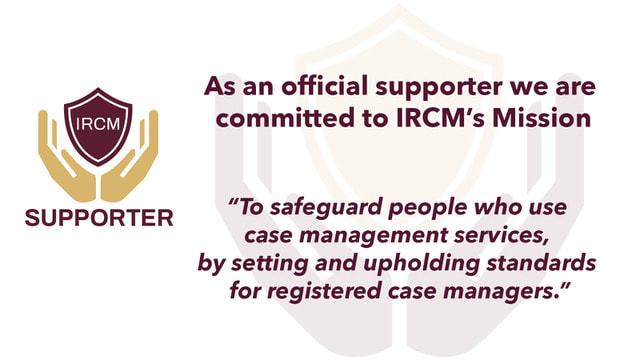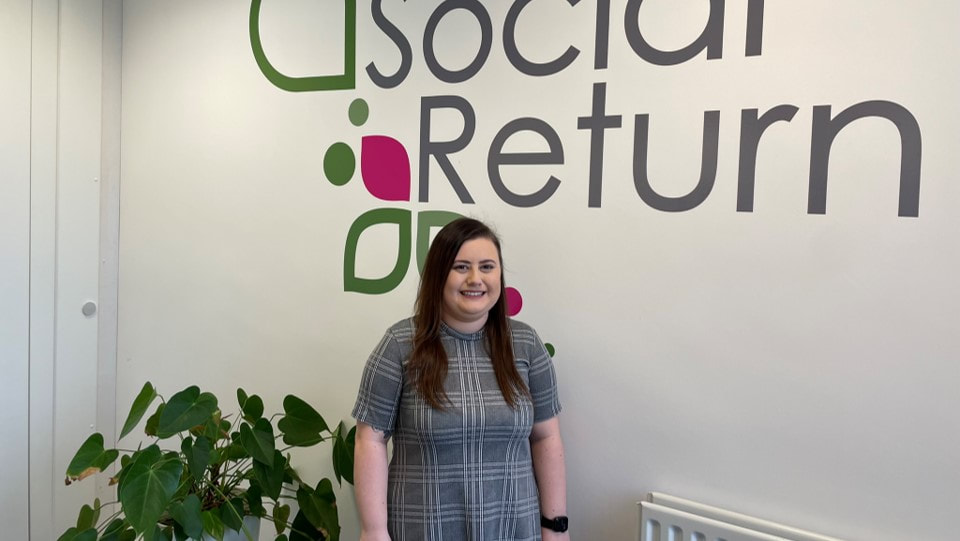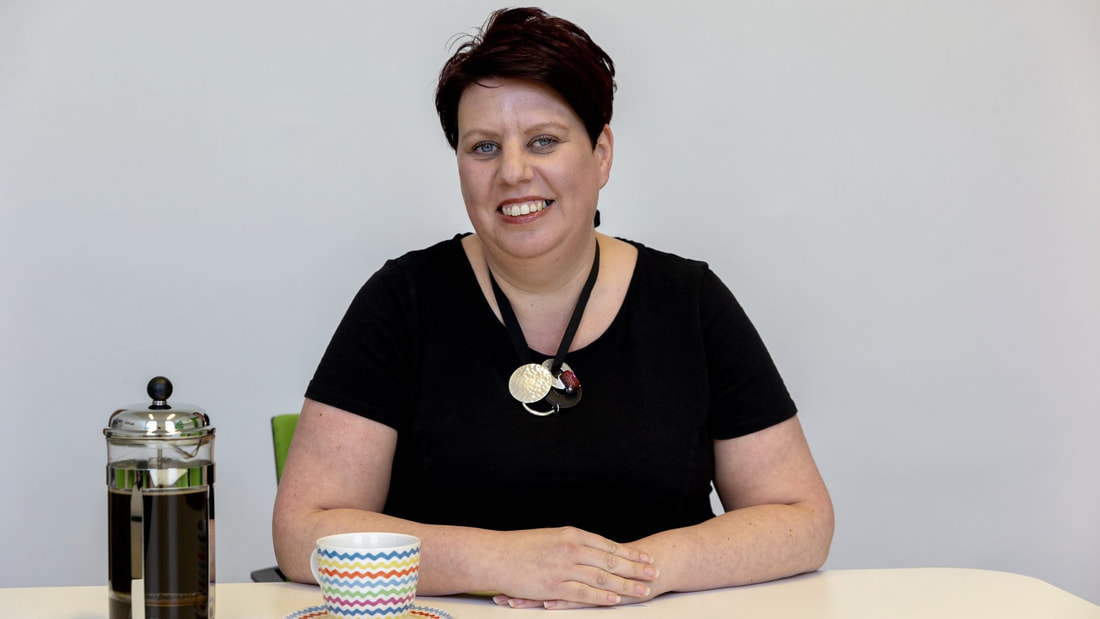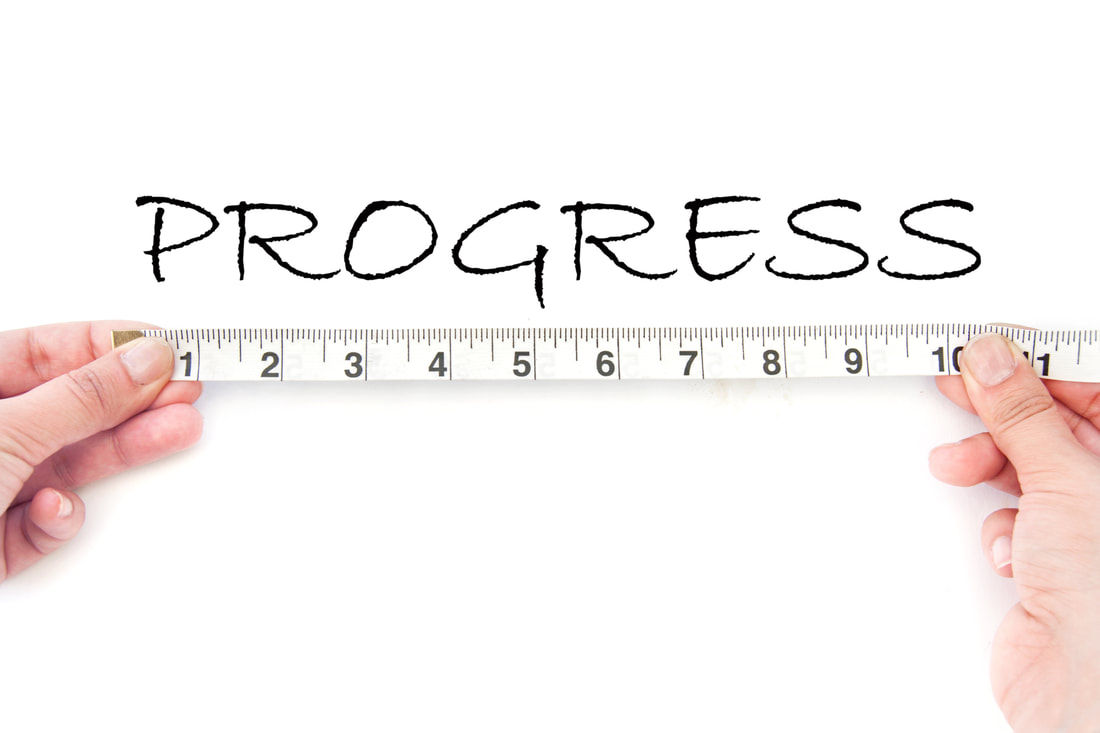connect@social-return.co.uk
0191 375 0256 .
ADELAIDE COURT, BELMONT BUSINESS PARK, DURHAM, DH1 1TW
|
Recently back from 4 days learning and networking at the IBIA Congress in
Dublin, I have had a bit of time to reflect.…. Having attended the event previously in 2016, it was exciting to be back and witness the progress made by the brilliant network of researchers and clinicians in the field. Several themes and ideas stood out; Current & prominent topics in ABI: The programme of the conference covered a wide range of topics related to brain injury, notable topics stood out for their frequent appearance, including;
Collaboration around the globe: More than ever collaborative work is happening around the globe. Almost every title slide demonstrated the international level of cooperation, co-working and sharing. This has always been the case but seemed more widespread and I wondered – alongside policies that promote collaboration - whether new levels of connectedness during the pandemic have been one of the drivers. For example, I attended an afternoon on social and cognitive communication disorders. Speech therapists/pathologists from around the world presented and discussed their work. The way in which they support and drive forward the work and each other was inspiring. I have never been in a room full of so many speech therapists, leaving me wondering what their collective noun might be…..? Later over coffee a Canadian speech therapist described how working together globally is a powerful way to move the research work forward in their relatively small profession. Co-creation between ABI survivors and professionals: Throughout the entire event the respect for those who survive brain injury and their family and social networks was palpable, the learning from their experiences was frequently referenced. What was notable in addition, was ever evolving and increasing levels of co-creation between brain injury survivors and professionals within both research and therapeutic work. The power of learning from observation: There were ‘pin drop’ moments and in the sessions I attended these were unvaryingly connected to real lived experiences. During sessions looking at psychological approaches to couples therapy after ABI, the intimacy of watching generously shared videos of real life psychology sessions was incredibly powerful and emotional. During the questions and comments it was clear how moved and grateful we all were for this opening up of what is more usually behind closed doors. Accessible, attainable research: There is always so much more to explore and investigate, this can sometimes feel quite a task as the human brain remains in many ways a mystery and yet this community of people have endless curiosity, energy and enthusiasm to keep unravelling the mystery. The speakers, poster presenters, and session chairs made research feel accessible and attainable. The conference highlighted how national frameworks worldwide shape experiences, progress and learning differently. In-person impact on learning and belonging: I noticed - in the way that one does these days - the importance of being in person together, the social aspects that prompt further discussion and depth of understanding. Comparing thoughts on a presentation, visiting a poster and probing the author about their work. As ever I felt that special ‘click’ with others interested in ABI – we connect via a common desire to lean into the challenges and captivating aspects of brain injury, we share in the fascination and delight in hearing each others’ tales of unusual and interesting cases. I reflected on being part of a ‘fellowship’ and that this therefore was my ‘international fellowship’. Concluding my reflections: This meeting of people brought together brilliant minds in the field. It was thrilling to be in the room with them, to meet them and to listen to their wisdom, thoughts and ideas. The warmth, support, and encouragement throughout the community of people involved in the world of brain injury was inspiring as were the moments when a question or comment clearly resonated as a new thought, idea or perspective demonstrating the power of a congress of people to produce these moments. The event provoked the thought of a brain-like analogy – a complex network of different areas specialising in all manner of aspects, linked and working together in specific areas. Whilst sending out information to the greater whole and creating new connections, which may well evolve into pathways which pull together more than one aspect into a new activity. It is shaped by its internal and external environment, factors known, unknown and yet to be revealed …. For me the strength of the MDT and the strength of teams across the globe in striving to do better to enhance recovery, progress and quality of life stood out as did the gratitude toward all presenters for sharing their valuable findings, knowledge and experience. So roll on IBIA Congress 2025 in Montreal – I can’t wait! Vicki Gilman MSc MCSP BABICM Chair Case Manager at Social Return Neurophysiotherapist building the rehabilitation team, balancing aspirations and goals with assessment of rehabilitation potential toward meaningful outcomes Brain injury rehabilitation is a broad church – part science, part art and certainly a very individual experience every time.
Many variables influence potential, progress and outcomes for each person engaging with rehabilitation. Factors such as; pre-injury abilities, age at injury, individuality, drive, motivation, general health, stamina, support, environment as well as the exact nature of the injury and time elapsed since injury alongside symptoms and impairments. Then there is the science and current understanding of the brain, how it works, how it repairs and how it responds short, medium and long term after injury. This is set alongside ever-developing understanding of how exactly treatments and therapies impact (even where we ‘know’ that they do), what the dosage of therapy should be and how to maximise the benefits in each case. It is therefore impossible to pinpoint and prescribe an exact pathway or specific treatments based on a diagnosis, scan or symptomatic picture. Good case-managed brain injury rehabilitation is therefore an approach and not a recipe or set prescription. It begins with a curious, observant and enquiring mindset, the building of rapport such that clear and open communication can occur, and ideally access to the client’s history and useful information on progress and issues to date (although the level of information available can be variable). The aim of the initial case management assessment – within which I include meeting the client and family but also gathering and analysing information from other sources directly and indirectly – is to build a picture of breadth, depth and colour as to each individual client and their unique presentation in the context of their own lives. A truly deep understanding of each client will continue to develop as the case manager and client work together identifying aspirations and goals and this is central. The case manager then builds and manages the active rehabilitation whilst aiming to hold the position of neutral and deep understanding alongside concurrent monitoring of progress. A multidisciplinary approach to rehabilitation will most usually be required and depending on a range of circumstances and the stage of recovery may consist of statutory provision, private provision or a mixture. The exact requirements in terms of the makeup of the rehab MDT around the individual may vary according to need. Case management aims to ensure an integrated and collaborative approach, within which good communication is central. I know from decades of my own experience that there is nothing more professionally satisfying than to be part of a rehabilitation team which is able to plan and work seamlessly and where there can be healthy debate and open exploration of all issues and ideas and thus arguably better rehabilitation effectiveness. This struck me again very recently during supervision when a case manager on my team shared her professional satisfaction to have built a team around one particular client. The team were working together so well that previous significant barriers to progress had dissolved and positive change was now very evident and building on itself, as it so often does when the client and family see meaningful progress and feel greater levels of trust and rapport with a team who ‘speak with one voice’. A word here about experience within the rehabilitation team. Knowledge and experience in the field are of course important but it is worthy of note that in brain injury rehabilitation, each clinician's experience and knowledge is shaped by the clients they have worked with. This is interesting because it means that the person who on paper may have the least experience within the team, may actually have experience of something particularly useful in a specific case that their more experienced peers have not yet encountered. Of course, the more years of brain injury rehab experience a team member has the more likely it is that they have encountered a wider range of impacts from these injuries, but I and my colleagues across the UK and beyond never cease to share tales of new experiences – it is something that unites the professional brain injury rehab community, a certain delight in being surprised by new issues, challenges and goals! So, whilst it is important that the overall MDT is able to draw on its expertise and experience of rehabilitating brain injury survivors, that can arise from combined experience across the team and the savvy case manager can weigh this alongside finding the ‘right fit’ in terms of communication styles, approach and personality when considering the components of the team. A demonstrably curious, creative thinking, collaborative and reflective therapist who could work well with a particular client and their team might be a good choice even if their CV is not peppered with brain injury experience. So now let us turn to thinking about how far each client may be able to progress, what of their goals and aspirations are they likely to realise? How does the rehabilitation team assess and address this? Does potential change over time? Conversations of “rehabilitation potential” are often held with clients and families by the rehabilitation team, these conversations are important. The phrase is sometimes unpopular with rehabilitation professionals as it can be seen as limiting, however it is now widely used and in the context of personal injury litigation in particular it can be a helpful shorthand to indicate to everyone involved how far the MDT feel they can take the client through the rehabilitation process that they can offer (intentional emphasis). In my experience these conversations often begin when the client is receiving rehabilitation from statutory services who are working toward discharge or a slower stream rehab scenario, often this is about managing expectations for those reaching their potential within that particular service (again, emphasis intended). It is not uncommon at this stage for clients and families to suggest they are being written-off. They see potential but feel the message they hear is the reverse. Disagreements can ensue. This can be challenging - clinicians don't want to give what is sometimes referred to as ‘false-hope’, yet I've never in my 30-plus years in this field met a therapist that didn't want their patients to achieve the best possible results. I have however observed many differences of opinion between families and treating professionals, between professionals themselves and between predictions and actual eventual results. Given the vast array of factors we have yet to fully understand that I refer to above, but which in combination give rise to the variety and individuality of each post-injury presentation and progress afterward, it must be the case that predictions of rehabilitation potential - from professionals and non-professionals - are hypotheses. It is perfectly possible to hold many and opposing hypotheses at one time. Hypotheses offer a way to identify each 'best guess' based on the information and understanding that is available. Once proposed, the function of the hypothesis is to act as a statement of a possible outcome which can then be tested to see if it can be supported or not and in so doing more information is gathered which can assist in revising hypotheses / predictions to fit the individual and their circumstances. Presenting hypotheses gives a clear, inclusive and non-confrontational way to discuss differences of opinion with client and family and also across the MDT. In effect, it is face-saving if outcomes are not what any hypothesiser suggested, this can be important in maintaining relationships, trust and rapport. It allows everyone involved to feel heard and that their thoughts and observations have been considered. Even more importantly it allows goals and treatment plans to be built around testing the hypotheses that have evolved and the client is less likely to miss out on opportunities to improve, and where progress is not made as hoped for it facilitates healthier conversations and supports adjustment (in a way that may not happen if the client and family remain at odds with treating professionals because they don't feel heard). The art and science of rehabilitation that the case manager facilitates will be different each time – as individual as each client, and yet within the rehabilitation there will be similarities and themes that repeat across the world of brain injury rehabilitation. Crafting rehabilitation for each client will be a mix of many aspects, crossing boundaries, services and approaches which must be balanced and mixed for optimal impact. Key aspects will include the makeup of the MDT, client-led goal setting and inclusive open-minded conversations about potential with feedback linked to active monitoring of outcomes. Vicki Gilman MSc MCSP BABICM Chair Case Manager at Social Return Neurophysiotherapist We are happy to present our poster presentation "A Stitch In Time: Investing in Creativity for Stability and Sustainability". This poster was presented at the BABICM Annual Conference 2021. The presentation was created by Social Return's David Haxon and Jackie Waggott and Freya Masters. Supporting, sustaining and encouraging the growth and development of resilient and excellent case management practitioners. We are happy to present our recent poster presentation "Supervision in Case Management: The Just Right Challenge: Supporting, sustaining and encouraging the growth and development of resilient and excellent case management practitioners". This poster was presented at the BABICM Annual Conference 2022. The presentation was created by Social Return's Amanda Hopkin, Dip COT PGCE MSc and Carla Turner, BSc Hons MCSP. Social return is one of the first official supporters of the Institute of Registered Case Managers (IRCM). Here’s a summary of why we think this is such an important development for the case management sector
The opening of the register of case managers by the IRCM will, for the first time, mean that the UK has a dedicated register of practicing case managers. The public will be able to;
Importantly if there is a concern that an IRCM-registered case manager is working below the required level then there will be an independent and fair process through which concerns about any registrant can be raised and investigated, with appropriate actions taken if the required standard is found not to have been upheld. Social Return is proud to be an official supporter of the IRCM as we believe registration and protection for clients is important. We will be supporting all of our case managers to register with the IRCM and we are delighted to add registration for our case managers to our system of supervision, our learning programme and the skills and experience within our team. More widely we think that the sector will benefit from the establishment of a case manager specific register as another important component in assuring clarity and engendering confidence in case management when it comes to quality, protection, safety and accountability. By Rebecca Taylor, Case Manager at Social Return Case Management Case management supports clients to progress toward aspirations and goals for their lives. Integral to this is building a positive relationship with each client, and those close to them. My focus as a case manager is on each unique client and what they may need; something I really enjoy about the role. That said, there are common themes within our work. One theme pivotal to meaningful support and progress is the ability to build trust and rapport. THE IMPORTANCE OF RAPPORT IN CASE MANAGEMENT A Google definition of the word ‘rapport’ that fits my work is; “A close and harmonious relationship in which the people or groups concerned understand each other's feelings or ideas and communicate well.” Rapport is highlighted as a necessary communications skill within the BABICM Competency Framework (www.BABICM.org). Client and family feedback frequently indicates the importance of skilled case management support following life-changing injury. We may be the first professional with such a wide remit and sufficient time to spend with the client to deeply explore the changes since injury in their lives, alongside their aspirations and their needs. A collaborative assessment and planning process at an early stage is usually a good foundation upon which to build rapport. We can only progress toward providing recommendations that are appropriate and meaningful by listening and understanding each person and what motivates and engages them. From this, rapport grows with the opportunity for trust to develop and deepen. There must be room for debate, choice and challenge from our clients. This can be an opportunity for further discussion and reflection, deepening our understanding of their needs and situation, leading to deeper insight and strengthening of rapport. “Trust has to be earned and should come only after the passage of time” TAILORING THE APPROACH TO BUILD RAPPORT AND TRUST It is important to understand the right approach for each client in all stages of the relationship. Clients and family members have often been though a variety of challenging experiences. I find that some clients and families have gone for so long without the support they need, that they are very enthusiastic and quickly welcome any input and ideas from their case manager. For others it can take a number of meetings and some positive action, before a sense of mutual understanding and meaningful rapport begins to build, which promotes trust in a case manager and the case management process. It is most certainly the case that trust and rapport are not gained simply by being an experienced professional with a great CV full of evidence of knowledge and skill. Case managers must build rapport upon which trust can be earned. As the great American tennis player Arthur Ashe said “Trust has to be earned and should come only after the passage of time”. For more information Rebecca can be contacted at Rebecca.taylor@social-return.co.uk Tel: 0191 375 0256 David Haxon of Social Return Case Management shares the story of Martin.
In this article, David discusses working with Martin, a gentleman who sustained a catastrophic brain injury as a result of a road traffic accident as a young child; exploring how case management input provided him with opportunities to create 'new chapters' in his life. You can read the full article on the NR Times website. Jackie Waggott, BABICM advanced case manager and director, Social Return Case Management, writes for NR Times on the challenges of care provision for case managers and clients.
This article considers a range of issues faced by case managers in the provision of care services to clients and highlights the recent British Association of Complex Case Management (BABICM) research which highlights the challenges faced by users of care services, staff, commissioners, providers and coordinators/managers of care. Read the full article here. Are we only as good as our last outcome? I think that's probably something to keep in mind. Our biggest goal for many of the people that we work with - for case managers and also for therapists - is that we ‘do ourselves out of a job’ over time. If the person achieves all of their outcomes and makes the progress they seek, or as near to where they want to be as they can, that can be a fantastic outcome where we no longer have to provide a service to support that person. It means that they've achieved their goals and we've been part of helping them do that. We need to keep in mind that our role includes evidencing when somebody has progressed to the point at which there is less input needed or where we can start to withdraw. We also need to be aware of progressing to a point where needs have changed and where a change to a different approach may be needed. Goals must be SMART; we need to be smart to communicate them effectively. The smart acronym is a structure for writing goals - Specific, Measurable, Accurate, Realistic, and Timely. Case managers need to tease out these elements in the person's expression of what they want to change and ensure this understanding is shared across the team in order that all interventions are contributing towards meaningful progress and achievements for people. It can be challenging to turn the person's words into a SMART structure and bits of it can get lost. It can often end up being an action plan rather than a goal. It is a skill and an art to be able to articulate what can sometimes be quite a nebulous thing that somebody wants to be able to do into something that you can use as a vehicle to then structure their therapy and input around. Our clients may need support to understand how a focus on a specific area, or that doing things in a particular order or a different way comes from the aspirations they have articulated. This is placed alongside skilled assessment which together with the personal aspirations identify the best path toward achieving their goals. The path may not be smooth. It may require experimentation and trial to establish the most effective way forward. It may not be a direct line from A to B, particularly following complex and catastrophic injury. The client’s aspirations may change over time as progress is made and space is needed for the person and the plan to change and evolve. Inputs, outputs, and outcomes – what is the relationship between them? There is an opportunity in case management to take innovative approaches on an individual basis. We can look at different approaches, clients can access services and methods that may not traditionally be part of rehabilitation and recovery pathways. Social Return case managers support the client and their whole team to try things out and experiment within a framework of clear justified reasoning. There is a wide range of experience within the team of innovative approaches to draw upon. The team is beneficial for clients and as a team member within Social Return - you don't have to have all the answers because you can go to the rest of the team and access that shared knowledge and experience with novel solutions or suggestions. How does this approach help Solicitors, Insurers and Deputies? Solicitors and Deputies can rely on our very client-centric approach. It goes back to each individual unique client. There's nothing more powerful than listening to somebody's own individual story and developing a deep understanding of that person’s experience and aspirations for their recovery and their lifestyle. The context is always the client, and their story informs the approach we take and clarity in the documentation of their progress toward their clearly articulated goals. We are mindful when legal processes are going on in parallel and we don’t lose sight of the need to present a clear picture of the situation, the goals, plans and to demonstrate progress and context. Our job as case managers however is to keep the focus on each individual client. What are the challenges to demonstrate and measure outcomes as opposed to outputs? It is about being very clear and very specific using the SMART goal structure to demonstrate the difference in what has been achieved alongside ensuring context and over time that an accurate picture is painted in the data and information collected. It might be crucial to demonstrate a very small difference, or even that somebody has stayed the same because there are times for specific individuals when not getting worse is a positive outcome. This can feel challenging because you want people to get better but on occasion plateaus can occur, often related to the complexity of the issues that some of our clients have. It is then important to recognise that you managed to keep somebody on an even keel as an outcome. Sometimes that's just as difficult as enabling people to progress. A bit about me I came to Social Return as a result of my longstanding connection and relationship with Vicki Gilman and Jackie Waggott, whom I worked with as an independent occupational therapist for many years. I am now leading the development of the service in the south and the South West of England. I was ready for a new and different challenge that would use the skills that I've achieved and developed over the nearly 30 years as an OT and the knowledge of working with case managers for well over a decade. Throughout the roles and opportunities, I've had, I've always been interested in outcome measures and being able to demonstrate the difference that people can achieve through therapy and having case management and support. My Masters dissertation focussed on outcome measures in community rehab, and I've continued to support the use of SMART goals and outcome measures to share and demonstrate the difference made as people develop and change. If you would like to find out more about demonstrating value, please contact me on the below details. I have always been interested in outcomes and the measurement of change in the people I work with. In fact, I spent quite a few months writing several thousand words on this very subject for my master’s dissertation and the phrase “I love a spreadsheet me” has often been whispered in my presence. Enough said on that subject though. Looking back on this got me thinking about measuring change – How do we ensure that the people we are working with are fairly represented? How can we make sure that any change is meaningful? How do we demonstrate value and evidence progress? So, who’s outcome is it? This is an important question to think about when we consider the significant effort and (all too often) sacrifice that has been made to engage and participate in interventions and activities that are designed to stimulate change. There are “costs” associated with this – emotional, physical, social, psychological, environmental, spiritual, financial etc. etc. We need to remind ourselves of this and not lose sight of the person behind the numbers and graphs – balancing the quantitative snapshot with the qualitative detail of peoples lived experience of change. It’s not difficult to translate what we do with people, as case managers, therapists, doctors, solicitors… into numbers to demonstrate that a change has occurred between two-time frames and there are plenty of tools to enable us to do this – 'Mrs S can now wash, dress and toilet themselves with moderate instead of full assistance', We get a nice graph, everyone’s happy…or are they? Whilst this allows us to compare progress between individuals, professionals, and services, does it compare progress within the person? Does it really articulate what is important on an individual level? Being able to communicate change in a meaningful way that makes sense to a wide audience is a skill that is refined over time and developed through discussion and active listening. We don’t always get it right and can lose sight of the person behind the statistics if we are too focused on the numbers and providing data. That’s why we need to gather a variety of information that serves multiple purposes. As an example, I worked with a young man with a brain injury – James, and his Physio to become stronger and fitter with the aim of him being able to ride his bicycle with his school friend in the local park – his aspiration. He wasn’t very motivated to do activities outside his Physio session and Dad found it difficult to encourage him after school. He did not like tech or gadgets to measure his progress between sessions, he did like taking things apart and putting them back together again. So… we looked at some bicycles in the right price range, with the right set-up. James chose the one he liked the best and we cut up a picture of it, so it had lots of parts and kept another picture of the whole bicycle as the background. For each part of the bicycle, we assigned a set of exercises and targets. Each time he completed the exercises to within the set targets, he chose the relevant part of his bicycle and stuck this over the top of the background. When he had rebuilt the whole bicycle back together again, we went out and bought the bicycle, and bicycle helmet. We then made a map of the park using a mixture of photographs we took as part of outdoor mobility sessions and drawings that James made. We made a set of mini bicycle stickers and each time he got so far round the park, he put a sticker on the map. James got fitter and stronger, more confident at riding his bicycle until eventually he was able to go on his first bicycle ride around the park with his friend. James, put his bicycle back together and was able to do an activity he enjoyed with the person he enjoyed spending time with. He told everyone about his new bike and how he was now cycling with his friend (as well as how much better he felt, how much less pain he was in and how much better he slept – if you asked him and his Dad!) The physio was able to demonstrate improvements in range of movement, strength, and balance by being creative with standardised outcome measures which were woven into fun activities. The case manager was able to demonstrate how James was achieving one of his aspirations through participating in Physiotherapy, how he was able to access equipment that continued to contribute to improving and maintaining his physical, social, and mental health as well as preserving social contact and engagement in age-appropriate activities. He was doing better at school - he was able to concentrate more and had an activity that he could talk about and do with others of his own age. Change could be demonstrated in terms of what James can now do compared with before. We were not just enabling him to achieve improved range of movement in his affected right arm and leg joints, we were enabling him to achieve so much more. We were demonstrating the change made through outcomes and outputs. Why does it matter that we differentiate between outcomes versus outputs? Outcomes personalise the “what's desired” and makes it meaningful. Putting the “what” into context for that individual and not just counting the action or the activity, it is about the personal, individual difference that it makes. It's about focusing on what that person does in their widest sense and context and celebrating how close they come to be being able to achieve or exceed in this. It's important to make sure that the things that the person wants to achieve are made very clear and change is viewed through the lens of the intervention or input that's provided to that person. “How does doing X, or providing Y enable P to achieve the thing they have said they want to be able to do, or be able to do differently?” An output is more like counting or quantifying a specific action or activity; service or product provided without necessarily looking at the wider purpose it achieves. For example, consistently providing P with 15 hours of support a week at home is an output. Whereas 15 hours of support a week at home enables P to go out to work 3 days a week and improve their mental health so they are no longer needing to take antidepressant medication. Outputs feed into outcomes and outcomes provide context and meaning – the “so what” which leads onto “what next, and next, and next….” Outputs are the pieces of the puzzle, and the outcome is parts of or the whole puzzle. Demonstrating Value Value is a personal, individualised concept and will mean different things to different people. That is why it can be quite difficult to quantify where several parties are involved, and they are often seeking different examples to demonstrate that value has been provided. In order to achieve this, we need to understand what the expectations are. Sometimes these will be less achievable or less realistic – that does not mean that attempts should not be made to work towards them as there is nothing better than being proved wrong. Often it is about compromise in such situations and aiming to understand the importance behind expectations and the meaning placed on the aspiration. This then helps in being able to think creatively and proactively about what value means to the different parties and what their needs are from the information we provide. This also links back to being clear and distinguishing between outputs and outcomes as well as devising a clear plan to work towards the desired achievements. This plan needs to articulate what the person will be doing differently rather than a list of actions or tasks that have been completed. Seeking feedback on the information provided will also ensure that there is not a mismatch between what was expected versus what was provided. At Social Return, we provide regular updates and ask for feedback to continually maintain high standards of communication and transparency in our case management activities. We like to be challenged and consider this an important part of our role to achieve the best outcomes for the people we work with. If you would like to find out more about outcomes and value, please contact me on the below details. |
Social ReturnSocial Return News & Events Archives
April 2023
Categories |











 RSS Feed
RSS Feed



18/4/2023
0 Comments